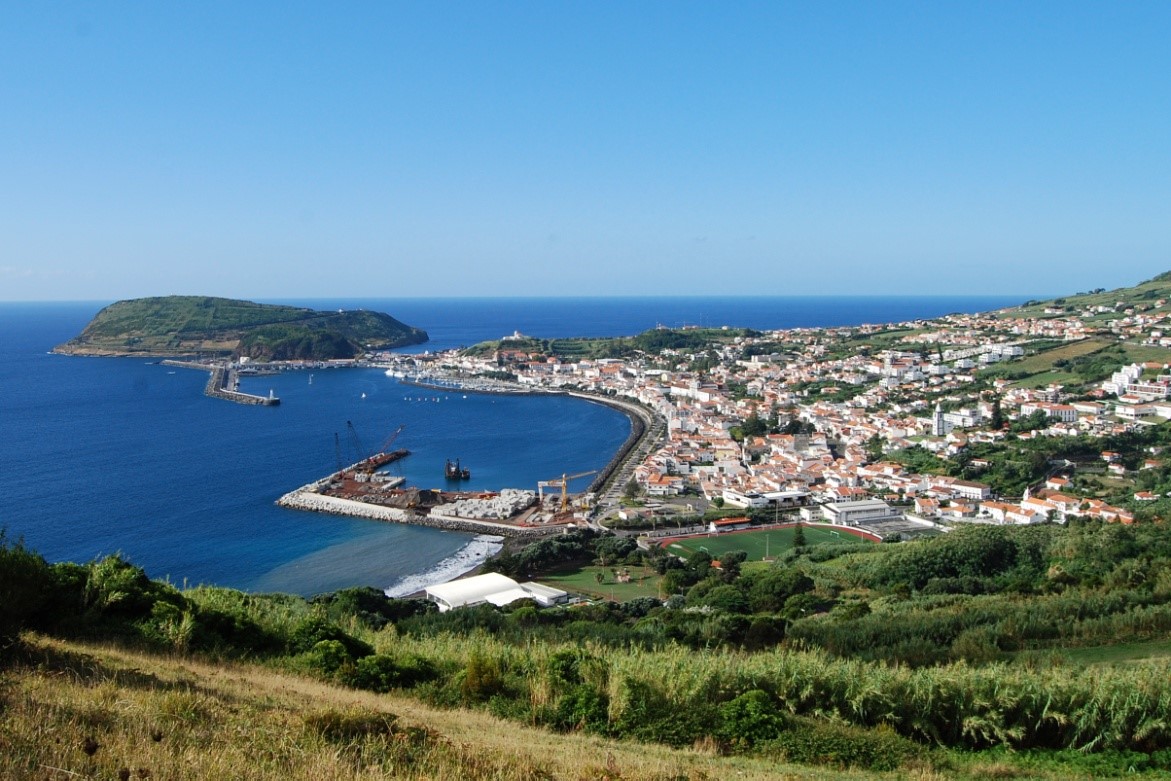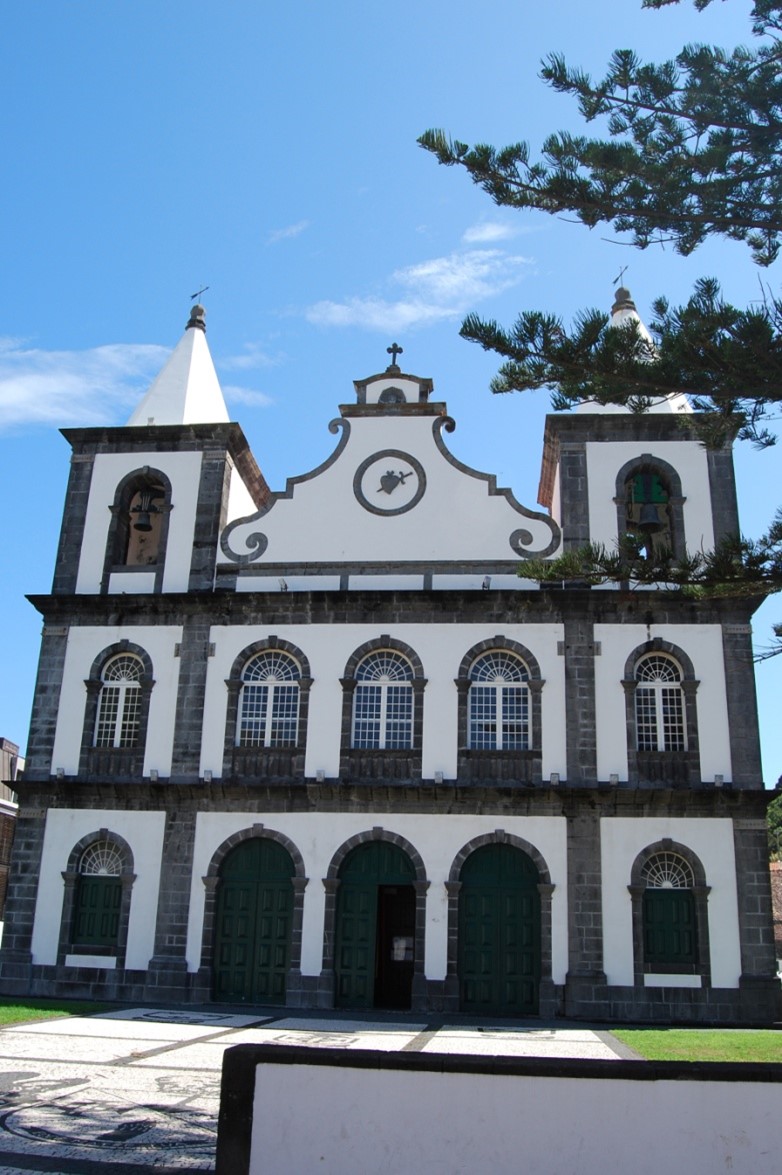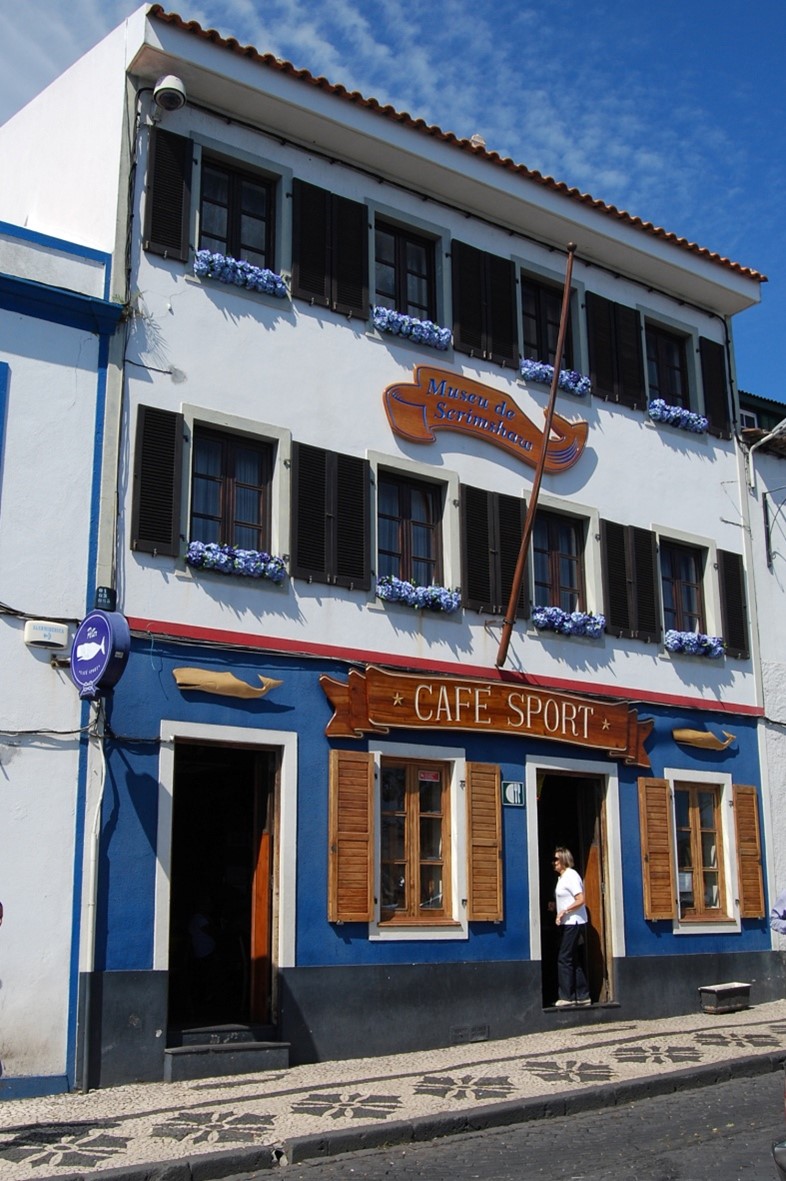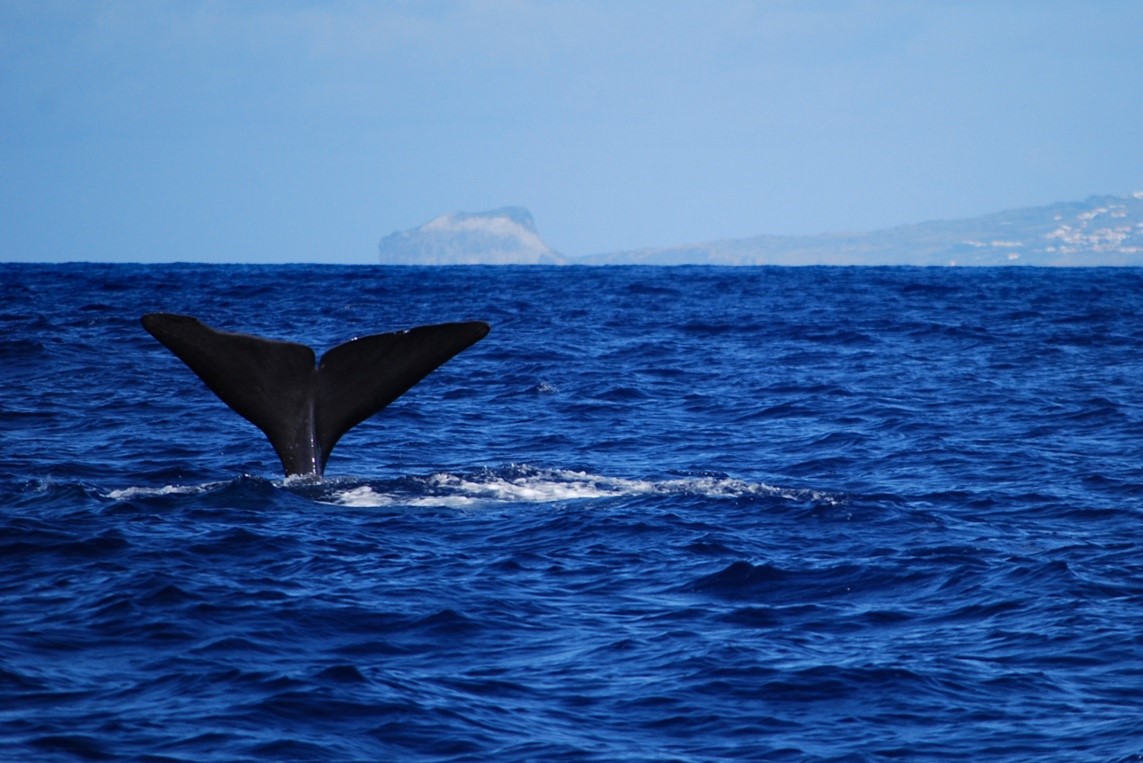Horta is a city of about 7000 on the island of Faial in the Azores. The Azores, a nine-island autonomous region of Portugal, lie about 1600 kilometres west of mainland Portugal. Although the executive capital of the Azores is Ponta Delgada on the island of São Miguel, the Legislative Assembly of the Azores is located in Horta.
Faial island was settled by Portuguese farmers in the 15th century. The city of Horta was founded later that century by Flemish nobleman Josse van Huerter (a friend of a friend to Portuguese royalty). We visited Horta during a multi-island trip to the Azores in September 2010.

Volcanoes old and new. Horta sprawls across a slope along a broad, sheltered bay on Faial’s east side. The extinct volcanic cone of Monte da Guia is to the left in this photo. At the other (western) end of the island, the relatively recent Capelinhos volcanic eruption lasted 13 months during 1957 and 1958.

Pico view. Horta provides the best view of Mount Pico, on the neighbouring island of Pico. Mount Pico, a dormant volcano, rises over 2300 metres from sea level. It is the tallest mountain on the Azores islands.

Historic windmills. On a hill overlooking Horta, one of a pair of restored windmills stands ready for iconic photos. Faial has several dozen windmills, the design of which display both Portuguese and Flemish influences. The windmills date from the 19th century, and were used for grinding grain.

Our Lady of Anguish. The 19th-century church of Nossa Senhora das Angústias was built on the site of the 15th-century Santa Cruz chapel. That chapel was built by Horta’s founder, Josse Van Huerter. The site of the chapel is said to be the location where the first mass was said on the island of Faial. Like most buildings of Horta, the church is constructed of volcanic basalt, some of which is smoothed over with plaster and paint. Nossa Senhora das Angústias (Our Lady of Anguish) is the patron saint of Faial.

Peter’s Café Sport. Horta is a popular stopping point for vessels sailing across the Atlantic. Its marina is full of bobbing sailboat masts, and its concrete wharf sports paintings made by visitors from all over the world. Directly across from the marina, Peter’s Café Sport is a de rigueur stop for travellers. The walls and ceiling of the bar are covered with mementos left by visitors over many decades. The bar, which originally served coffee, is now known for its gin (its own brand is Gin do Mar.)
Literary note: Mark Twain visited Horta in 1867 (before Peter’s Café Sport was founded, alas), and wrote about it in his book The Innocents Abroad.
A tail of a whale. Horta is a base for many whale-watching outfitters. Whale hunting used to be important to the Azorean economy, but has now been replaced by whale watching. Many species of whales migrate to or through the waters off Faial. This tail belongs to a sperm whale. We used a whale-watching service run by researchers, who identify individual whales by markings on their tails.
Travel note: The Horta Airport is 9 kilometres from the city of Horta, and serves destinations within the Azores as well as mainland Portugal. International flights generally use the airports on the islands of São Miguel and Terceira. Frequent ferry services run between Horta’s waterfront and the nearby islands of Pico and São Jorge.
This concludes (for now? forever?) my Cities in Six series. To view the previous twenty-three articles in the series, click on my name at the top of this article. Even better, get out and explore some cities yourself. The world is waiting for you!


